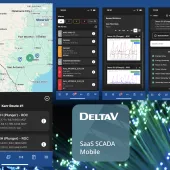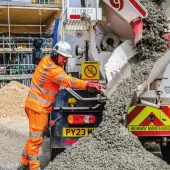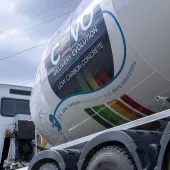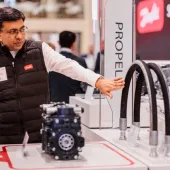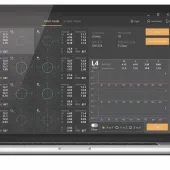Exploring the potential for 5G in construction
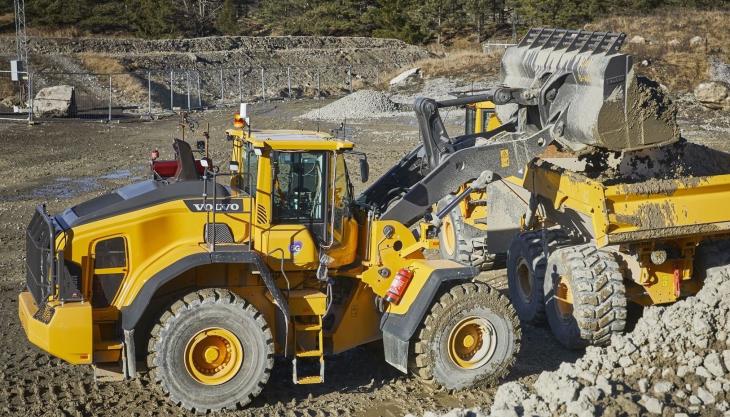
Volvo CE’s technical specialist for connected machines takes a look at the real-world potential for autonomous solutions
IN a global first, Volvo Construction Equipment are among a small number of pioneering companies trialling 5G mobile connectivity. The partner programme by Telia and Ericsson is the first industrial application of 5G, with only a small number of companies across the Nordic countries taking part. For Volvo CE, it means testing the development of remote-controlled machines and finding out the real-world potential for autonomous solutions.
‘5G allows us to transport data in ways that we could only ever dream about,’ explained Calle Skillsäter, Volvo CE’s technical specialist for connected machines. ‘A faster, more reliable mobile network will mean we’re at the forefront of driving a much faster market implementation of technologies such as automation. Something that had seemed impossible a few years ago is now a very real opportunity today.
‘We have a 25ha test site where a remote-controlled wheel loader, an L180H, is located – and a simulator inside a tent about 100m away behind a concrete wall. The test track itself has a number of physical barriers, uphill and downhill tracks and rough terrain – all designed to mimic the real conditions of a construction site. At the moment, the simulator is actually quite close to the machine, but this is only so that we can be near the track to adjust the conditions. There really is no reason that the machine could not be located much further afield.
‘In 2017, we successfully placed a machine 400m below ground and controlled it from the surface. And when we first tested the technology back in 2015, we had an excavator placed in Eskilstuna and operated from Barcelona. That tells you the potential for remote operation, and now with the reduced latency that 5G provides, it really does mean you can achieve remote operation from extremely far away. But at a certain distance the latency in the network will be significant anyhow.
‘We will be testing this technology for two years. Over this time, we will see the performance of the network evolve and get better. What is really exciting is that at this very early stage, we are in a unique position to iron out any problems and play a key role in actually influencing how 5G will work for industrial purposes when it is rolled out more widely.
‘Of course, the goal for us here at Volvo CE is that we want to make this system so mature and so successful that we can test it with our customers, to see how this technology can function on a real construction site. Hopefully that will be something we can achieve by the end of the trial.
‘The aim is that after the initial testing phase with the wheel loader, we will then be able to test it with the HX2 hauler concept machine to see whether it is possible to have a work cycle operated entirely using 5G. In principle, we can then test 5G with six to eight autonomous haulers transporting gravel across the site.
‘Mining can be dangerous – either for people operating the machines in remote locations or because of the fumes that are released after blasting rock. But if we can remove people from the site, then we are reducing the risk of accidents entirely. You will also have the capability to operate several operations and sites from one central location – increasing productivity.
‘Safety is obviously a big factor, but clearly 5G will have a direct positive impact on productivity. Today’s remote-control technology provides a delay which makes it very difficult to control a machine with any speed or precision, but 5G will be as good as real time. In addition, the picture quality is much better, video footage is in a better resolution and 5G provides a more reliable connection – all of which makes it easier for the operator in the simulator.
‘Initially, we did find it hard to get the hardware. We are so early in the trial that we have had trouble finding modems to communicate with the antenna. Telia have been useful in providing the right equipment for us to use. Being so early in trialling this technology obviously has its advantages and disadvantages.
‘When is 5G is eventually rolled out to the wider industry, it will come first to those that benefit the most, but it will take time to build the network and required infrastructure. In the construction industry, and for static operations such as a quarry or mine, it really can come quite fast. The timing is good – our customers need connectivity and they want more data, and we’re the ones providing the research to see just how possible it is.’



